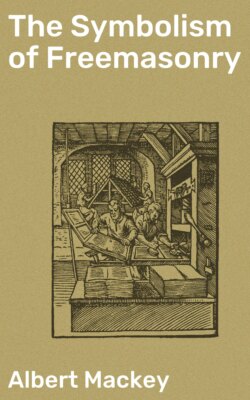Читать книгу The Symbolism of Freemasonry - Albert Mackey - Страница 16
На сайте Литреса книга снята с продажи.
Footnotes
ОглавлениеTable of Contents
1 ↑ "By speculative Masonry we learn to subdue our passions, to act upon the square, to keep a tongue of good report, to maintain secrecy, and practise charity."--Lect. of Fel. Craft. But this is a very meagre definition, unworthy of the place it occupies in the lecture of the second degree.
2 ↑ "Animal worship among the Egyptians was the natural and unavoidable consequence of the misconception, by the vulgar, of those emblematical figures invented by the priests to record their own philosophical conception of absurd ideas. As the pictures and effigies suspended in early Christian churches, to commemorate a person or an event, became in time objects of worship to the vulgar, so, in Egypt, the esoteric or spiritual meaning of the emblems was lost in the gross materialism of the beholder. This esoteric and allegorical meaning was, however, preserved by the priests, and communicated in the mysteries alone to the initiated, while the uninstructed retained only the grosser conception."--GLIDDON, Otia Aegyptiaca, p. 94.
3 ↑ "To perpetuate the esoteric signification of these symbols to the initiated, there were established the Mysteries, of which institution we have still a trace in Freemasonry."--GLIDDON, Otia Aegyp. p. 95.
4 ↑ Philo Judaeus says, that "Moses had been initiated by the Egyptians into the philosophy of symbols and hieroglyphics, as well as into the ritual of the holy animals." And Hengstenberg, in his learned work on "Egypt and the Books of Moses," conclusively shows, by numerous examples, how direct were the Egyptian references of the Pentateuch; in which fact, indeed, he recognizes "one of the most powerful arguments for its credibility and for its composition by Moses."--HENGSTENBERG, p. 239, Robbins's trans.
5 ↑ Josephus, Antiq. book iii. ch. 7.
6 ↑ The ark, or sacred boat, of the Egyptians frequently occurs on the walls of the temples. It was carried in great pomp by the priests on the occasion of the "procession of the shrines," by means of staves passed through metal rings in its side. It was thus conducted into the temple, and deposited on a stand. The representations we have of it bear a striking resemblance to the Jewish ark, of which it is now admitted to have been the prototype.
7 ↑ "The Egyptian reference in the Urim and Thummim is especially distinct and incontrovertible."--HENGSTENBERG, p. 158.
8 ↑ According to the estimate of Bishop Cumberland, it was only one hundred and nine feet in length, thirty-six in breadth, and fifty-four in height.
9 ↑ "Thus did our wise Grand Master contrive a plan, by mechanical and practical allusions, to instruct the craftsmen in principles of the most sublime speculative philosophy, tending to the glory of God, and to secure to them temporal blessings here and eternal life hereafter, as well as to unite the speculative and operative Masons, thereby forming a twofold advantage, from the principles of geometry and architecture on the one part, and the precepts of wisdom and ethics on the other."--CALCOTT, Candid Disquisition, p. 31, ed. 1769.
